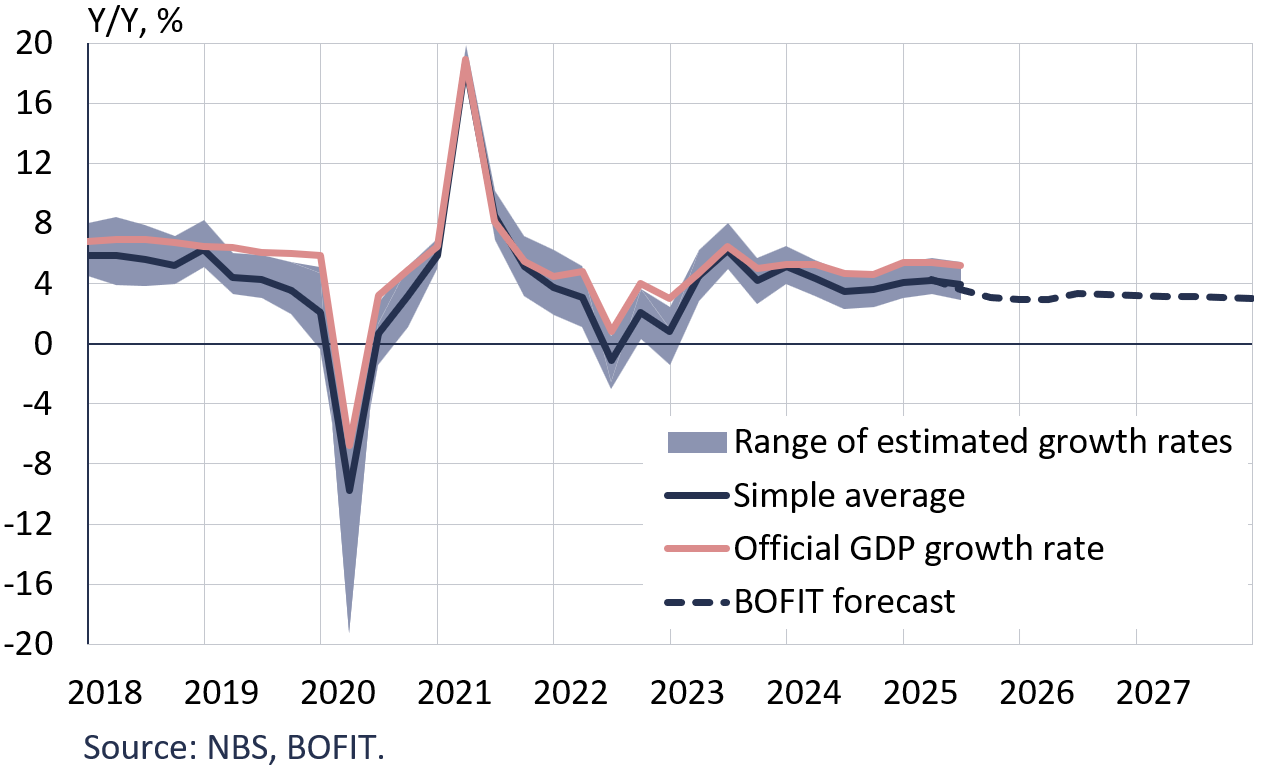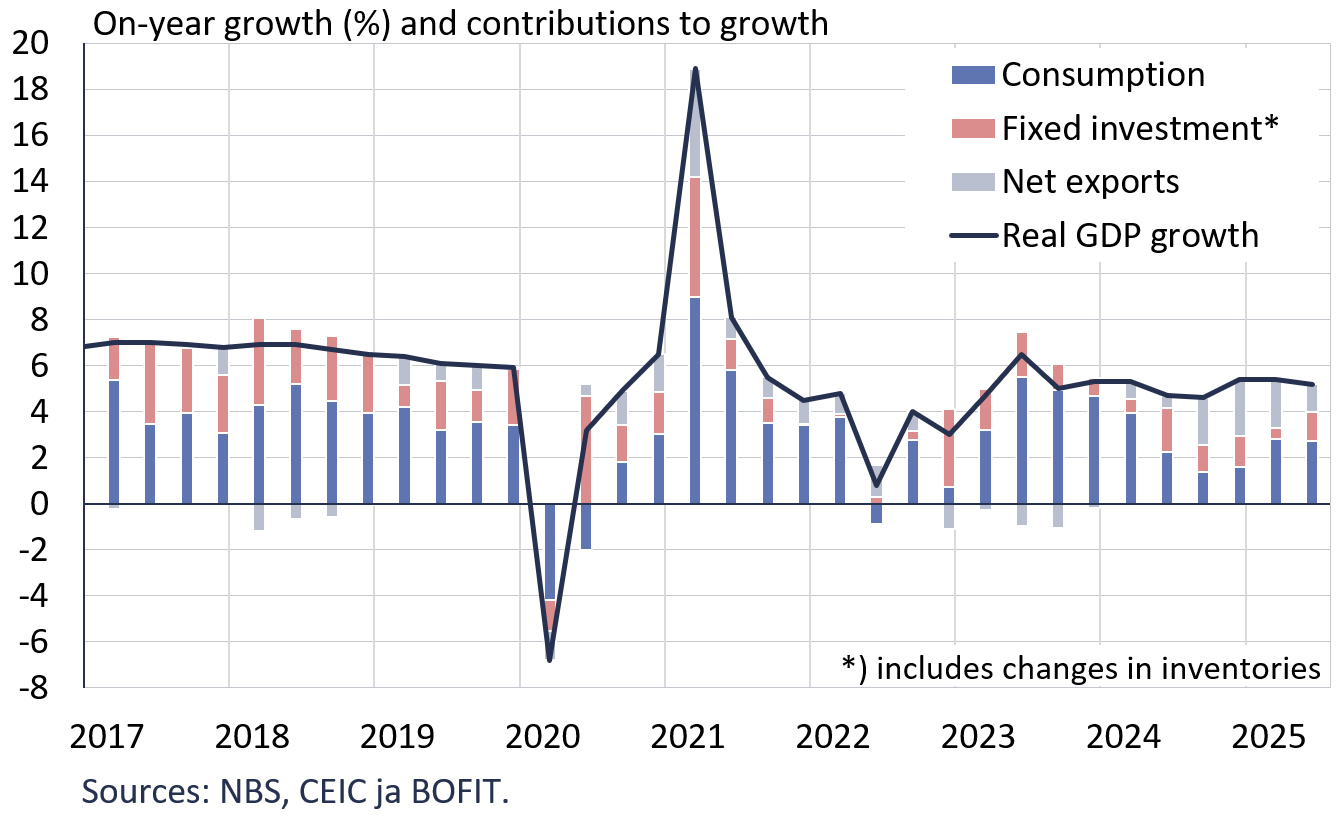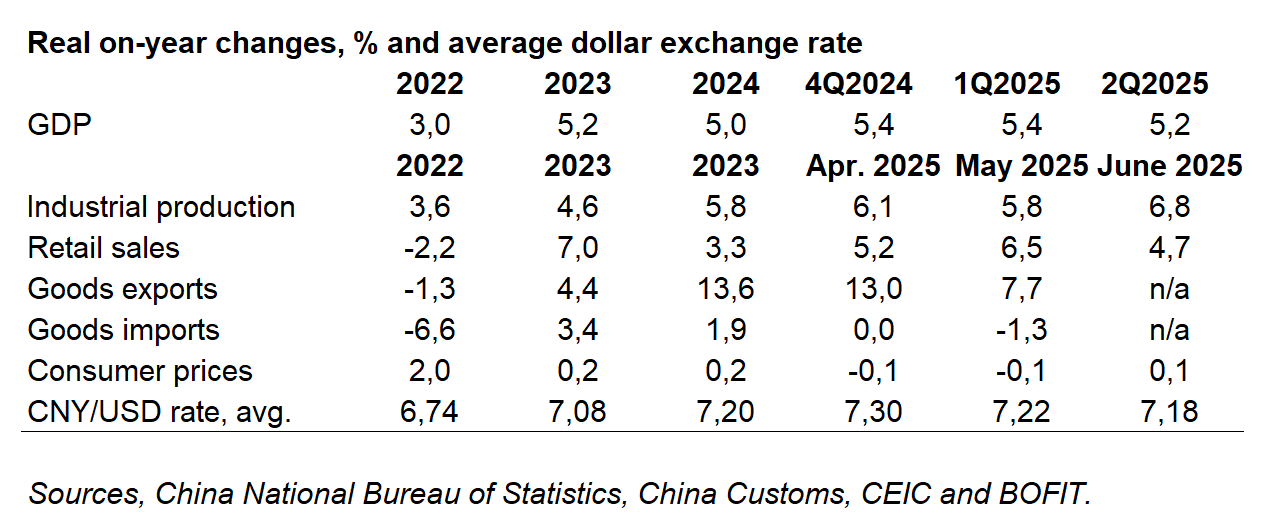BOFIT Weekly Review 30/2025
China’s economic growth held steady despite tariff drama
China’s GDP grew by 5.2 % y-o-y in April-June. While second-quarter growth slowed slightly from the official 5.4 % in January-March, growth was still well in line with the government’s announced 2025 “about 5 %” GDP growth target. China National Bureau of Statistics (NBS) reported that 2.7 percentage points of GDP growth came from increased consumption, 1.3 p.p. from fixed investment and 1.2 p.p. from net exports. BOFIT’s alternative calculation of Chinese GDP suggests that second-quarter growth was closer to 4 %, or roughly a percentage point lower than the official figure.
China’s recent GDP growth has been quite stable

Given the on-going uncertainty created by US tariff policy, Chinese economic growth was surprisingly strong. The value of China’s exports increased by 5.9 % y-o-y in the first half of this year as the drop in exports to the US was offset by increased exports to Southeast Asia and Europe. Following the signing of a temporary trade agreement with the US, China’s June industrial output growth climbed to 6.8 % y-o-y. The rise in consumption was boosted by government incentives such as the extension of the subsidy programme for purchases of durable goods. The programme grants subsidies on purchases of certain home appliances, electronic devices and new cars. Retail sales in June grew by 4.7 % y-o-y, a decline from 6.5 % in May, due to weak growth in sales of durable goods not included in the government subsidy programme. Domestic demand suffered from the on-going slide in housing prices and weakness in China’s job market.
Relatively tepid domestic demand and rapid output growth also drove down prices of capital goods, a situation creating the impression of high real growth in fixed investment. The NBS reports that construction investment fell by 11.2 % y-o-y in the first half, while nominal growth in fixed investment slowed from 3.7 % in the first five months of this year to 2.8 % in June.
The contribution of net exports to China’s GDP growth declined slightly in the second quarter

In recent months, the People’s Bank of China has chosen to leave key policy rates and reserve requirement ratios unchanged. Markets have been expecting a slight easing in the PBoC’s monetary stance as the inflation rate remains close to zero. Even so, central bank policymakers argue that, given China’s growth paradigm tied to high levels of fixed investment, a more accommodative policy stance would only fuel growth in production capacity at a time of weak demand. Such a move could make exacerbate over-supply problems and lead to lower prices.
